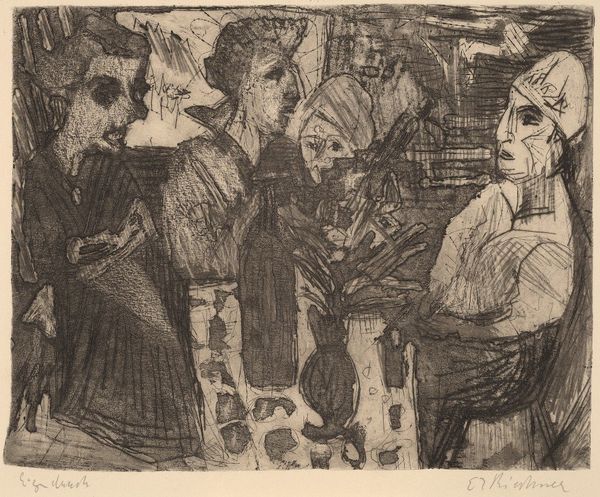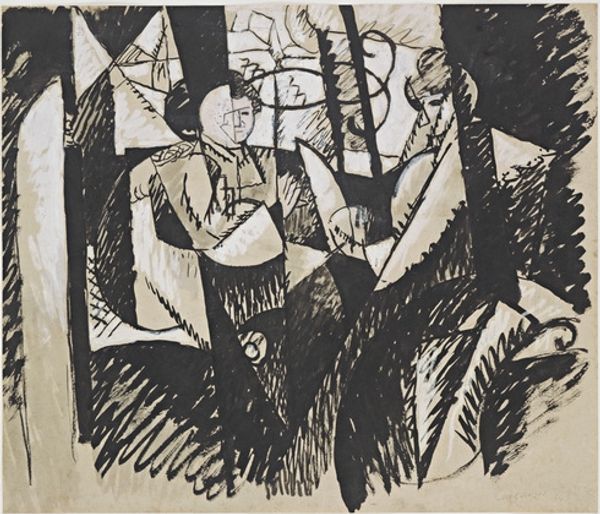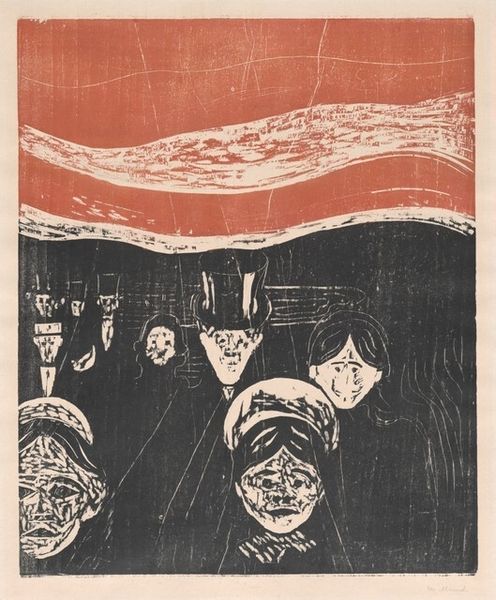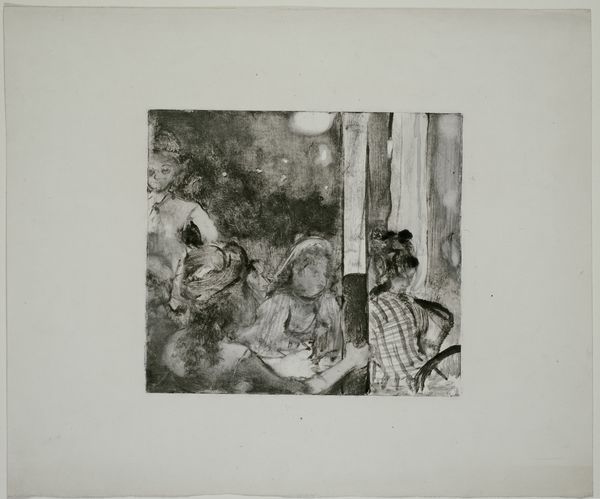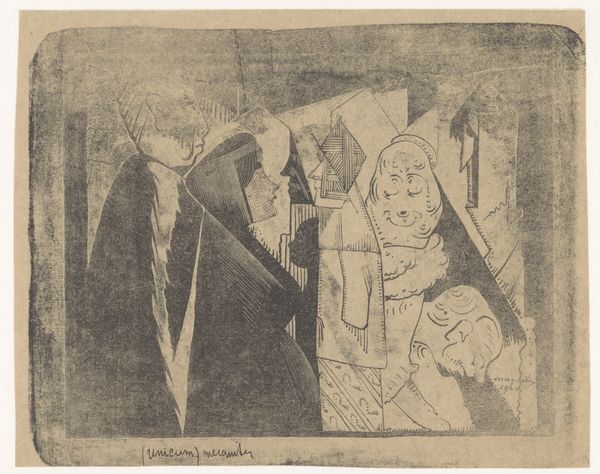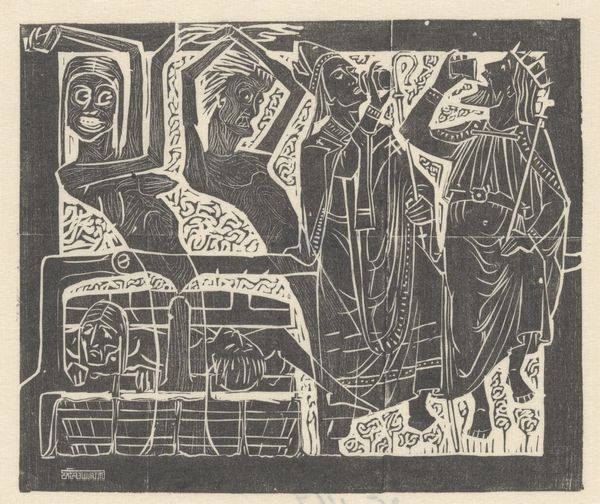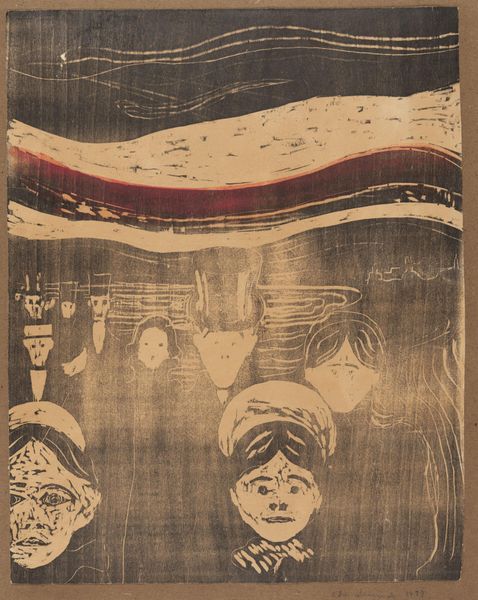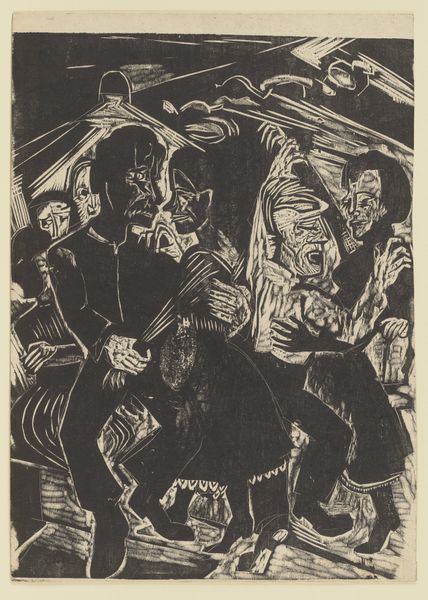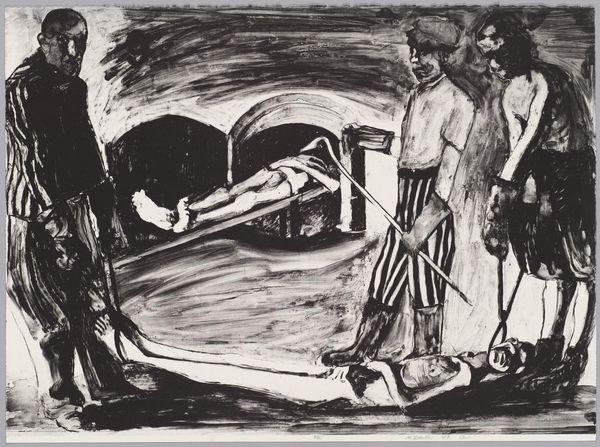
drawing, print, etching, paper
#
drawing
#
narrative-art
# print
#
etching
#
etching
#
figuration
#
paper
#
expressionism
#
symbolism
#
history-painting
Dimensions: 498 × 600 mm (image); 556 × 662 mm (sheet)
Copyright: Public Domain
Curator: Standing before us is Edvard Munch's 1915 etching and print, "The Smell of Death," a stark work currently housed here at the Art Institute of Chicago. Editor: It's immediately oppressive. The composition, with its converging lines and somber coloration, seems to press down on the viewer. The coarse texture only intensifies that feeling. Curator: The rawness of the printmaking certainly contributes. Munch frequently used such means to amplify psychological states. This piece is directly linked to Munch's personal experiences, particularly the deaths of his mother and sister at young ages. The etching portrays the suffocating atmosphere of grief and loss that pervaded his childhood home. We must consider the cultural context, too, the high mortality rates of the time and how death permeated everyday life. Editor: Look how the vertical lines of the walls mimic bars of a prison or a cage, while the lines of the floorboards, sharply vanishing, seem to drag your eye towards that pallid form lying in the bed – the stark central point of this enclosed, almost airless space. The distortion contributes heavily to the emotional impact. Curator: Absolutely. Consider Munch’s complex relationship with his family; these tragic experiences shaped his worldview and artistic output. The child at the foreground is hiding his face while looking from under the hand with tearful eyes and distorted facial features; the whole artwork is deeply biographical, expressing anxieties and traumas surrounding family and societal expectations. The adults hovering around appear alienated and isolated as if in separate realities. Editor: Yes, the alienation is palpable. The figures lack any true connection, each lost in their own isolated experience. The restricted tonal range and stark contrast further emphasizes a mood that is suffocating and emotionally bleak. Curator: By confronting the pervasive fear of death through art, Munch was grappling with societal taboos. The work is an invitation to acknowledge our own mortality and the complex emotional terrain of grief. Editor: Ultimately, Munch offers us a masterclass in conveying visceral emotionality through masterful manipulation of line, form, and texture. The longer I look, the more claustrophobic this etching becomes. Curator: Precisely. It serves as a poignant reminder of our shared human experience of loss, resonating even today across different contexts.
Comments
No comments
Be the first to comment and join the conversation on the ultimate creative platform.
